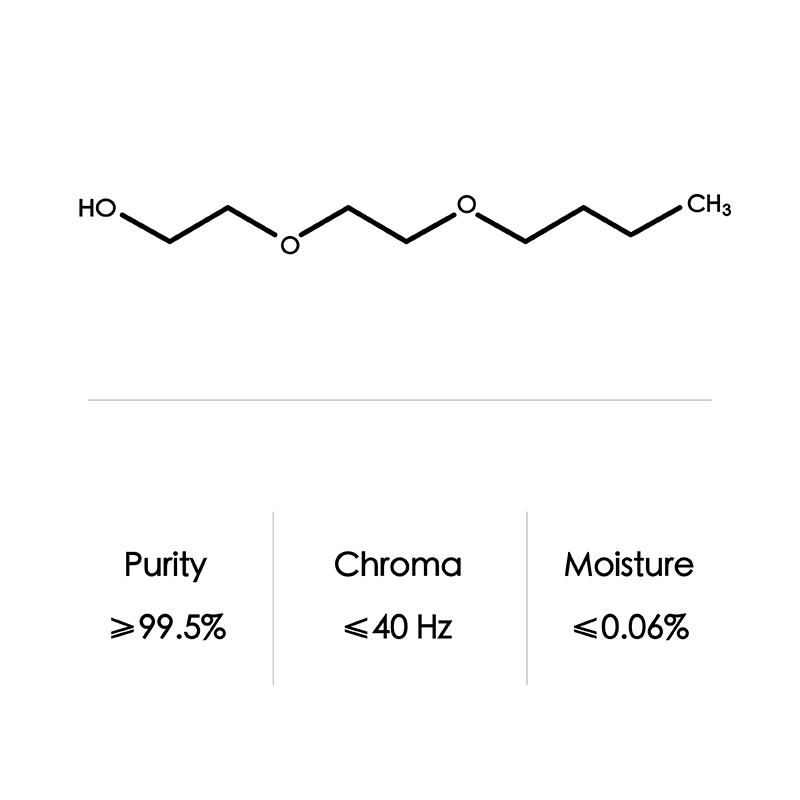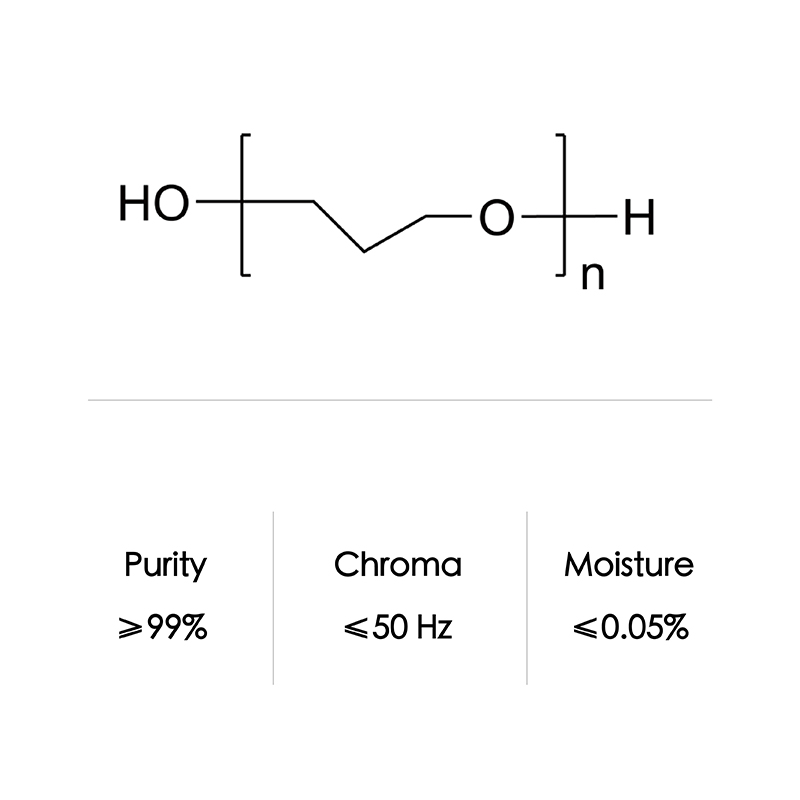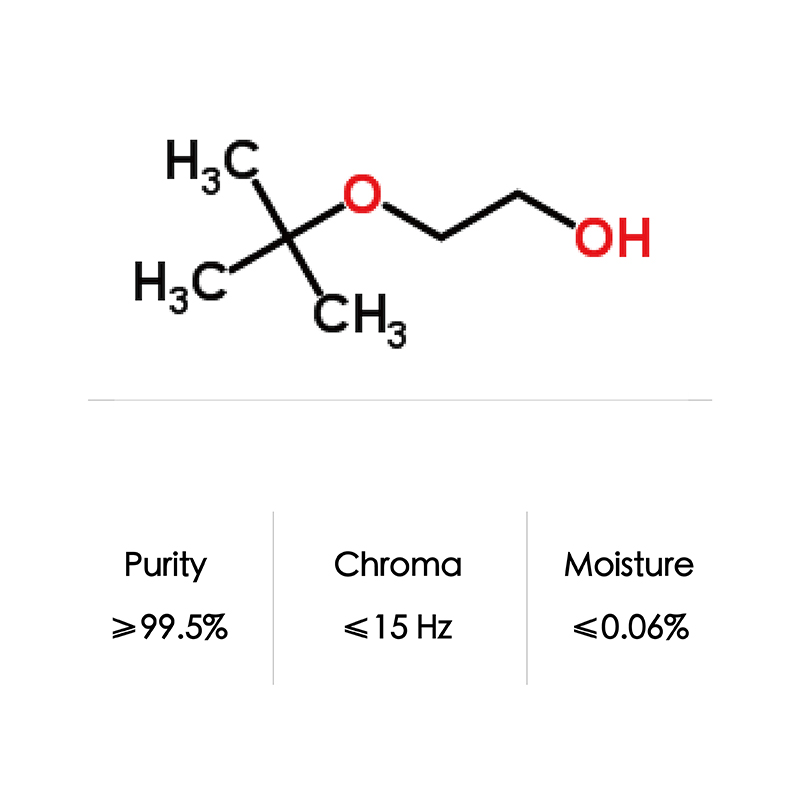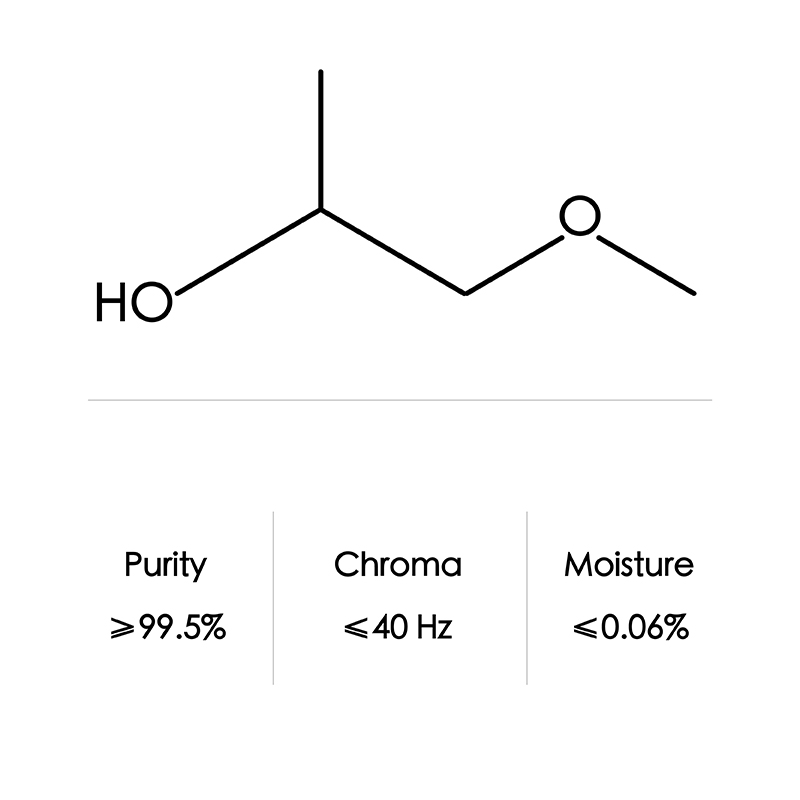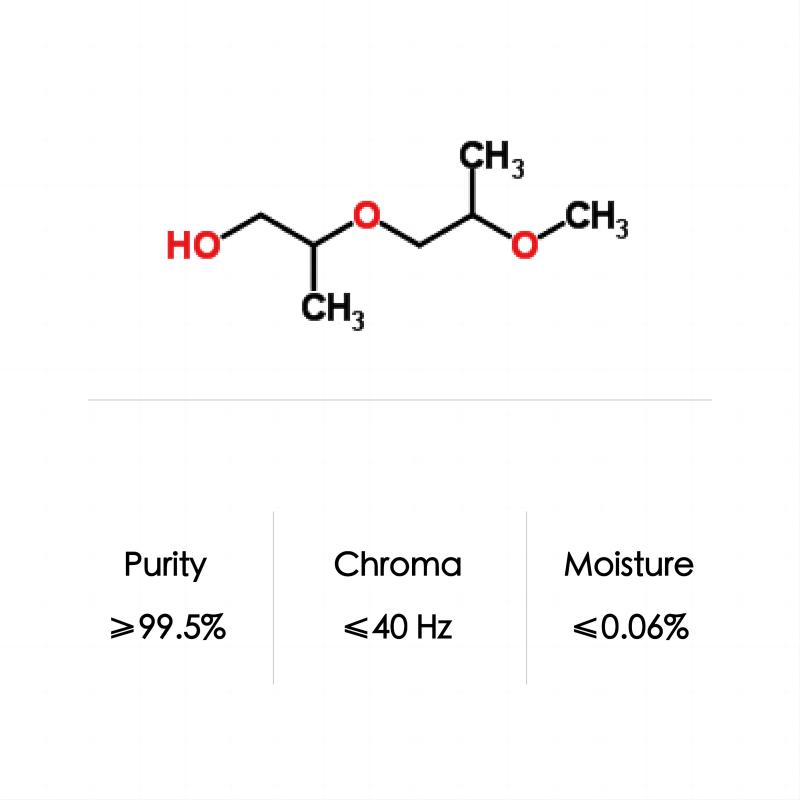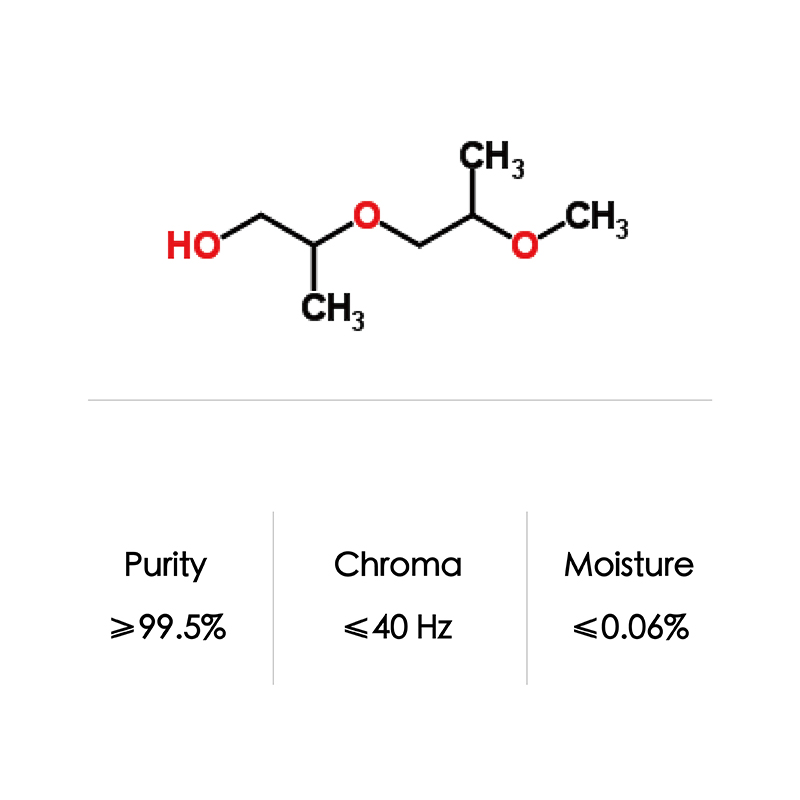
Products
Diethylene glycol butyl ethe (DB)
Product Description
Diethylene glycol monobutyl ether (DEGBE) is produced by the reaction of ethylene oxide and n-butanol with an alkalic catalyst.
In pesticide products, DEGBE acts as an inert ingredient as a deactivator for formulation before the crop emerges from the soil and as a stabilizer. DEGBE is also a chemical intermediate for the synthesis of diethylene glycol monobutyl ether acetate, diethylene glycol dibutyl ether, and piperonyl acetate, and as a solvent in high baked enamels. Other applications of DEGBE are as a dispersant for vinyl chloride resins in organosols, a diluent for hydraulic brake fluids, and a mutual solvent for soap, oil, and water in household cleaners. The textile industry uses DEGBE as a wetting-out solution. DEGBE is also a solvent for nitrocellulose, oils, dyes, gums, soaps, and polymers. DEGBE is also used as coupling solvent in liquid cleaners, cutting fluids, and textile auxiliaries. In the printing industry, DEGBE applications include: solvent in lacquers, paints, and printing inks; high boiling point solvent to improve gloss and flow properties; and used as a solubilizer in mineral oil products.
Properties
| Formula | C6H14O2 | |
| CAS NO | 112-34-5 | |
| appearance | colorless, transparent, viscous liquid | |
| density | 0.967 g/mL at 25 °C(lit.) | |
| boiling point | 231 °C(lit.) | |
| flash(ing) point | 212 °F | |
| packaging | drum/ISO Tank | |
| Storage | Store in a cool, ventilated, dry place, isolated from the fire source, loading and unloading transportation should be stored in accordance with the provisions of flammable toxic chemicals | |
*The parameters are for reference only. For details, refer to COA
Application
| Used as a solvent for nitrocellulose, varnish, printing ink, oil, resin, etc., and as an intermediate for synthetic plastics. It is used as a solvent for coating, printing ink, stamp printing table ink, oil, resin, etc. It can also be used as metal detergent, paint remover, lubricating agent, automobile engine detergent, dry cleaning solvent, epoxy resin solvent, drug extraction agent |
Storage Precautions
Store in a cool, ventilated warehouse. Keep away from fire and heat source. Protect from direct sunlight. Keep the container sealed. Should be stored separately from oxidizers, do not mix storage. Equipped with the appropriate variety and quantity of fire-fighting equipment. The storage area should be equipped with leak emergency treatment equipment and suitable shelter materials.
Advantage
Product quality, sufficient quantity, effective delivery, high quality of service It has an advantage over a similar amine, ethanolamine, in that a higher concentration may be used for the same corrosion potential. This allows refiners to scrub hydrogen sulfide at a lower circulating amine rate with less overall energy usage.

